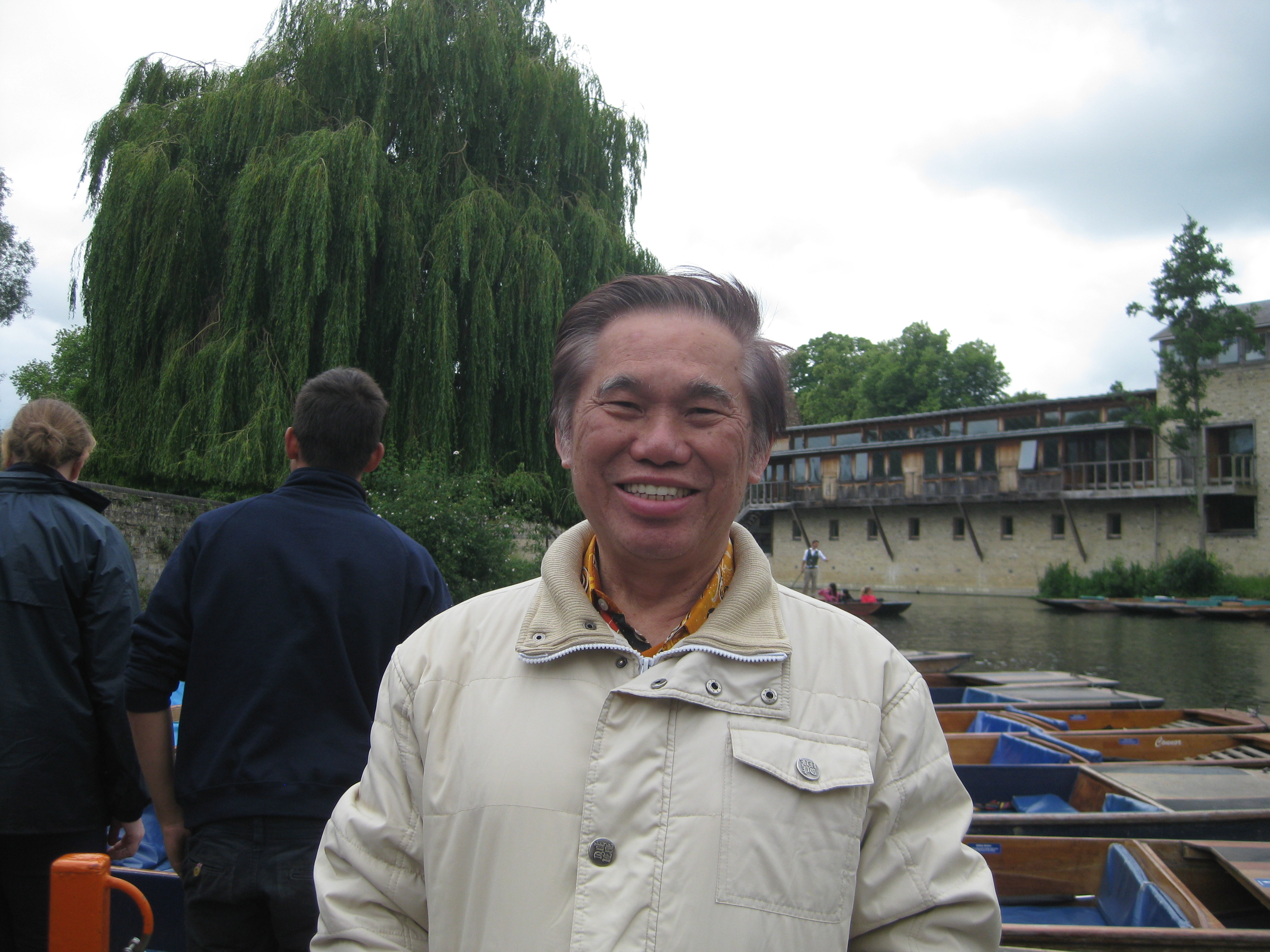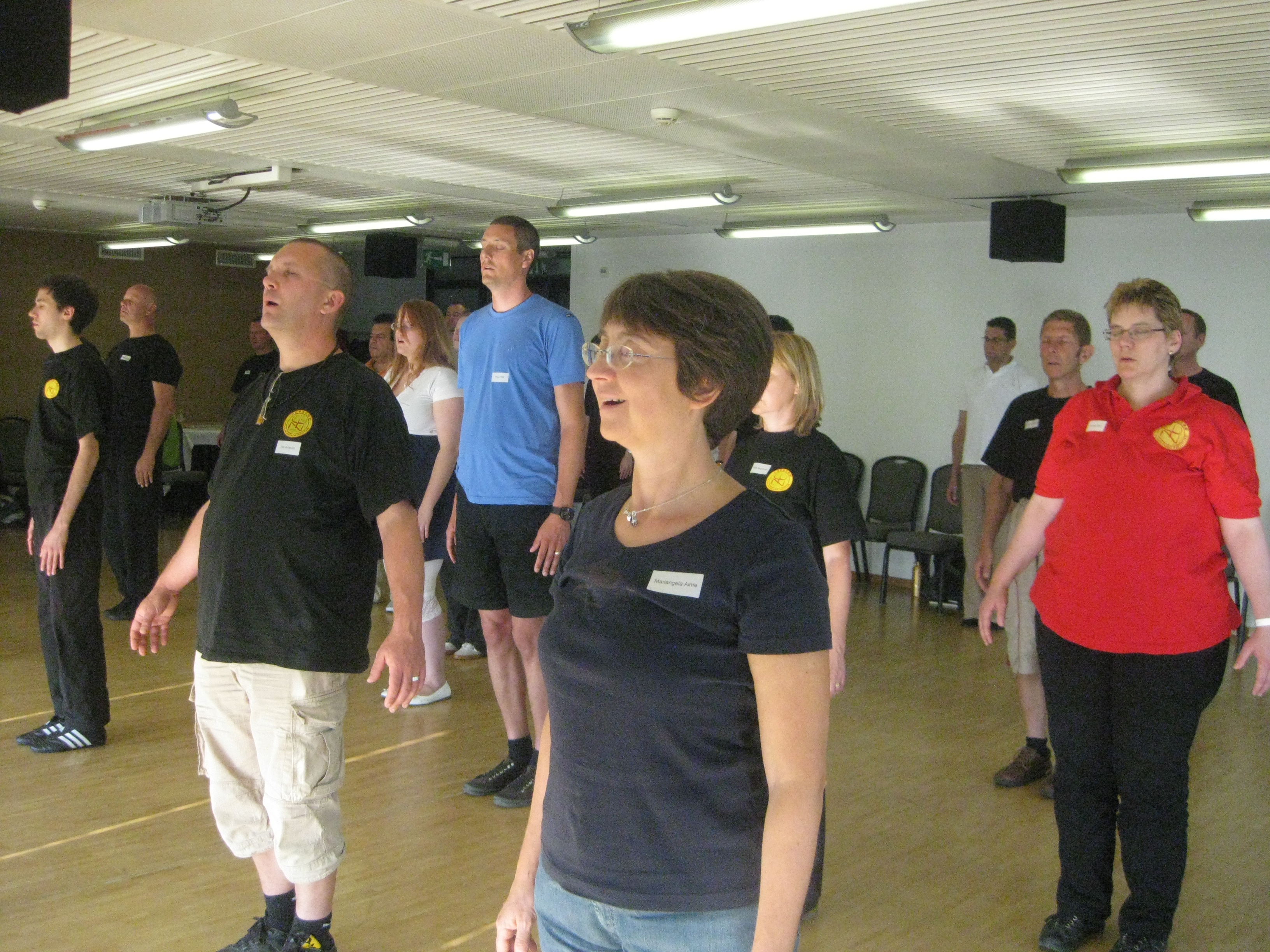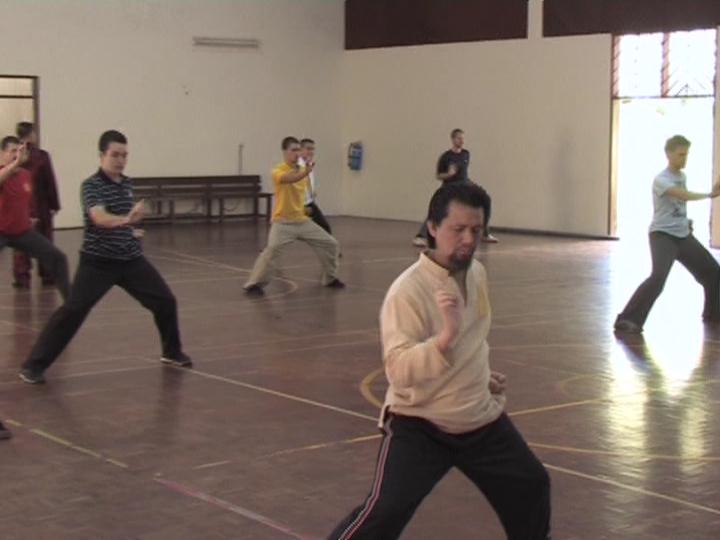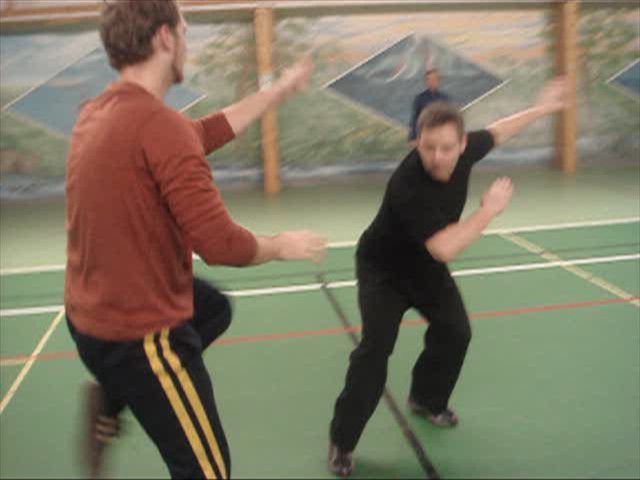SELECTION OF QUESTIONS AND ANSWERS
FEBRUARY 2013 PART 3

Grandmaster Wong smiling from the heart in Zen
Question 1
Should we practice Zen in a lotus position?
— Thomas, Switzerland
Answer
For us it is not necessary to practice Zen in a lotus position because we can get better and faster results in a standing upright position.
Your question highlights a big mistake many people make. They chose the most advanced method without realizing the risks involved and without realizing they are not getting good results.
Meditation seated in a lotus position is the most advanced from of mediation position. It produces deep levels of meditation but it takes a longer time than other positions. It is also risky and more damaging than other positions for those who practice wrongly.
Standing mediation, on the other hand, is the easiest and the results come fastest. If all other things were equal, the results of standing meditation are not as deep or advanced as those of meditation seated in a lotus position.
Why do people practice meditation? There are many reasons and they all range from the most basic of being relaxed to the most supreme of attaining the highest spiritual fulfillment called variously as Enlightenment, attaining the Tao or returning to God the Holy Spirit. There are countless reasons between these two extremes, like mental clarity, mental freshness, internal force and spiritual awakening.
Most people practice meditation for being relaxed, and very few practice meditation to attain Enlightenment or returning to God the Holy Spirit.
For the basic attainment of relaxation, adopting the standing position is the most suitable. The result comes fast and the practice is relatively harmless. Adopting the lotus position is not a good choice because it is more difficult to attain the same result using this position, it takes a longer time, and it is easier to cause adverse side-effects. Yet many people choose this position.
If all other things were equal, one should choose the lotus position if he wants to attain advanced benefits like mind expansion and spiritual awakening. But for us other things are not equal. We are more skillful in meditation than many other people. Using the standing position we can attain these advanced results faster than most other practitioners who use the lotus position.
Question 2
It is funny that time is not the same when we are in Zen meditation.
Answer
Time is not real; it is a human perception. Hence, when we are in a Zen state of mind, or a heightened state of consciousness, our perception of time is different.
For example, in the session on problem solving just now, what is three minutes to ordinary people appear to be much longer for us. We solved problems in three minutes that in ordinary life may take months!
On the other hand, when engaged in sparring, some of our students experienced time at a different level. An attack which takes a second or two in ordinary time may appear like a minute.

Standing Meditation during a Zen course in Bern, Switzerland
Question 3
You have often mentioned smiling from the heart. What benefits smiling from the heart have on health, combat efficiency and daily living?
Answer
It is often said that laughter is the best medicine. Many people realize the truth of this statement but may not know the reason, which is as follows.
When one smiles from the heart, the heart opens and energy blossoms out. If he is relaxed, this will generate an energy flow which can clear blockage. As illness is caused by energy blockage, clearing the blockage will restore the person to good health.
When you smile from the heart, you become calm and peaceful. Your mind is clear and your responses, physical and mental, become quick and sharp. These conditions contribute to combat efficiency .
Being relaxed provides the best conditions for all your physiological and psychological as well as external functions. This means your body and mind work well, enabling you to produce good results in daily life.
Question 4
I often regard people's comments as ironical. What advice you have for me to handle ironical comments?
Answer
A good way is to take the comments at their expressed meaning, rather than trying to read meaning into them which may nor may not be true.
For example, someone may say, "Wow, you're very handsome!"
Instead of taking his comment as ironical, take it at its expressed meaning, and thank him for the compliment. Yu need not worry whether his comment is sincere or ironical.
If he meant his comment to be ironical, the irony bounces back to him. If he is sincere in his comment, you have responded correctly. Either way you have acted well.

One-Finger Shooting Zen during an Intensive Shaolin Kungfu Course in Sabah
Question 5
How do I find out whether a statement is ironical?
Answer
You find out whether the speaker or writer means what he (or she) says, or means the opposite. If the intended meaning is opposite of what is said, it is ironical.
For example, you just had a meal, and a friend remarked that it was a good meal. If you had a good meal, then the remark was sincere. If the meal was bad, the remark was ironical.
An irony, however, may not necessarily be malicious. Sometimes it may be intended to be a joke.
Suppose you did something clumsily, and a friend remarked that you were elegant. You know it is meant to be ironical, though it may not be malicious. How should you respond?
As advised earlier, take his statement at its expressed meaning instead of reading meaning into it, even though you know the intended meaning was the opposite.
Thank him for his remark, without worrying whether it was meant to be a joke or sarcasm. If he was jovial, he would appreciate your response, though it may make him wonder whether you are ironical too. If he was sarcastic, the sarcasm bounces back to him.
Question 6
I am focusing now on One-Finger Shooting Zen in my internal force training instead of stance training or "zhan zhuang". Do I have to practice both or I chose one? I would like to hear your comment and advice.
— Hussain, Saudi Arabia
Answer
Generally you will get better result if you focus on One-Finger Shooting Zen now. You may, if you like, also practice stance training together with One-Finger Shooting Zen, or just stance training alone once a while.

There is a lot of internal art in Shaolin Kungfu
Question 7
Someone told me the following about Shoalin Qiqong. Can you tell me if it is true?
Shaolin qigong is often mostly "wai gong" or external training. It works from outside in and is often not permanent in change of the body. This is not true in all cases but dependent once again on the depth of knowledge of the teacher. Qigong derived from internal martial arts and it always focuses on the internal body first and foremost. It takes longer to develop but is a permanent change in the body.
— David, USA
Answer
The description above is generally true in the de-facto situation today, but not true in a de-jure situation. A de-facto situation is a situation as it actually is, whereas a de jure situation is a situation as it should be.
In other words, in actual situations today, those who practice Shaolin qigong mostly practice external forms that work from outside in, and their benefits are external and temporary. But this is not because of Shaolin qigong; it is because these practitioners have not learnt from genuine Shaolin qigong masters.
This situation is the same for all other types of qigong. Today most qigong practitioners, irrespective of the types of qigong they practice, learn only the external forms and miss the internal essence.
The de jure situation, or the situation as it should be, is different. All qigong is internal, and the benefits one gets from learning genuine qigong are more lasting than those from external exercise.
There are countless types of qigong, but the most advanced is Shaolin qigong. Shaolin qigong has the widest range. At its beginner's level, it enables its practitioners to be relaxed and peaceful; at its supreme level it enables them to attain Enlightenment.
Even in the past, it was rare to have the opportunity to learn from a genuine Shaolin qigong master. It is rarer still today.
It takes longer to attain similar results in internal arts than in external ones. For example, you want to break a brick or to be able to be engaged in sparring for an hour without feeling tired. If you practice external exercise like hitting a sand-bag or skipping and running, you may achieve the result in one year. If you practice genuine qigong you may need three years.
This is a fact generally accepted, that it takes a longer time to attain similar results in internal arts than in external arts, but the results in internal arts last much longer. But the situation in our school, Shaolin Wahnam, is different. Our students, for example, can break a brick or spar for an hour without being tired after training our qigong for six months.
From my experience and understanding I have come to the following conclusion. I believe that it is the first time that such conclusions are explained, or even realized, by any masters and shared with the public.
It takes a longer time to attain similar results in internal arts than in external arts not because of the arts themselves but because of the way they are being taught and practiced. If everything is ideal, internal arts should produce better results in shorter time. But not everything is ideal.
First, we need to understand the difference between techniques and skills. Internal art practitioners have to practice their techniques for a longer time before they can acquire the needed skills to develop internal force for their intended purpose, like breaking a brick or sparring without feeling tired.
External art practitioners take a shorter time to acquire the needed skills to develop muscular strength. This is because both the techniques and skills of an external art are more visible than those of an internal art.
For example, for the three years of training to break a brick, an internal art practitioner may have practiced his techniques for a year before he has acquired the skill of energy flow. Because he does not know about energy flow though it occurs in him, he does not pay attention to it and therefore may not have energy flow each time he practices. Hence he may have to practice for another two years before he can generate enough energy flow to have the internal force to break a brick.
An external art practitioner may practice his techniques for only three months to acquire the skill of developing muscular strength. He knows that it is muscular strength that breaks a brick, so he focuses on it in his training. He may need another nine months to build up his muscular strength to accomplish his task.
However, if the necessary skills are acquired by an internal art practitioner early, and he understands the philosophy about it, he will need a shorter time to develop the internal force. In our school the skills are transmitted to him from heart to heart.
If one has no experience of genuine internal training, he may not understand what is said here, though it has been explained clearly and precisely.
Question 8
You talked about vigorous exercise, like sports and gym work, and the energy needed for their vigorous sports coming from their internal organs and other parts of their body and that was why the practitioners were physically and mentally tired after the vigorous exercise.
From the following list, can you tell me which ones are bad for body energy?
Running, swimming, boxing, gym training and practice, Muay Thai, body conditioning, Judo, Jujitsu, Silat, Combat Sambo, Wing Chun, Shaolin.
Answer
I would not want to point out publicly from the above list what I think is bad for your body energy. You would have to make your own conclusion based on the advice I have given.
However, I can tell you from the list you have provided what is best not just for your body but also your mind, sometimes referred to as spirit or soul. That, of course, is Shaolin. If it were another art, I would have practiced that other art.
But you have to learn a genuine Shaolin art -- be it qigong, kungfu or Zen -- and from a genuine Shaolin master. If you learn from a Shaolin master who teaches you Shaolin forms, but weight-lifting for force training, and Boxing for combat, it is more likely to be harmful than beneficial.
Indeed, often it is not the art but the teacher that is more important. Learning a low-level art from a good teacher is often better than learning a high-level art from a bad teacher.
LINKS
Selected Reading
- What is Zen
- Chi Flow and Cash Flow
- Why Shaolin Kungfu is the Greatest Martial Art
- Combat Applications of Cloud Hands
- I Could Never Pay You Enough for this Gift
